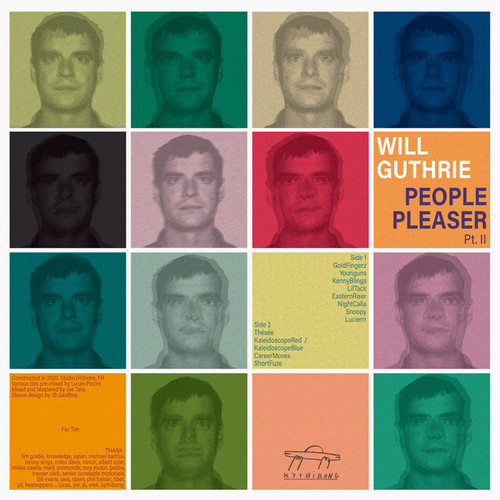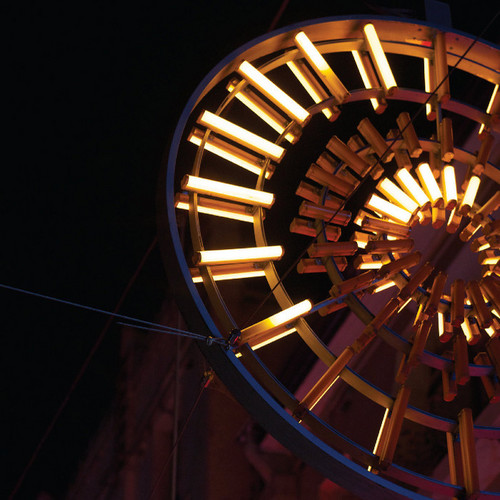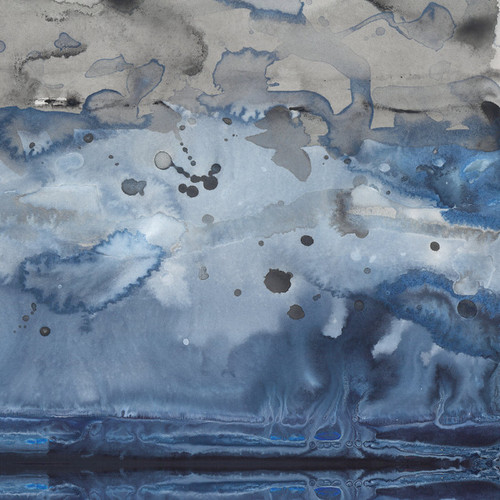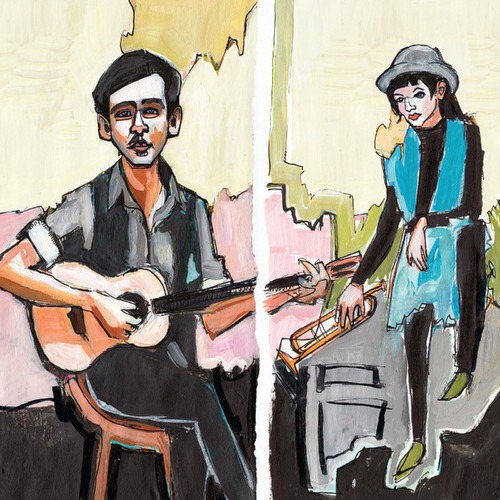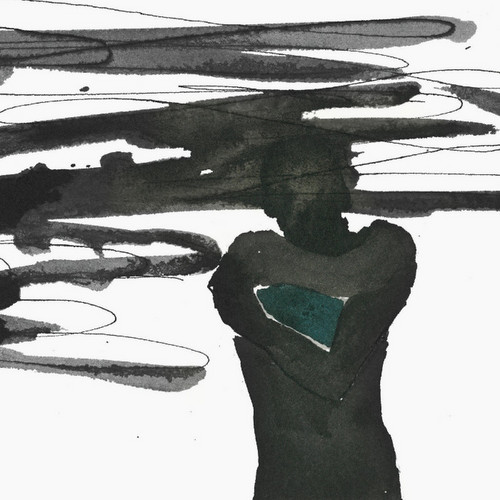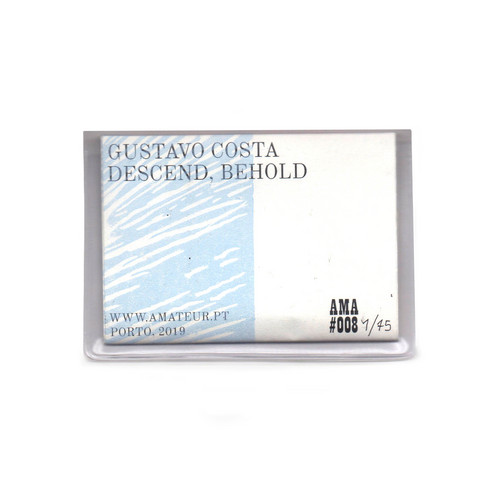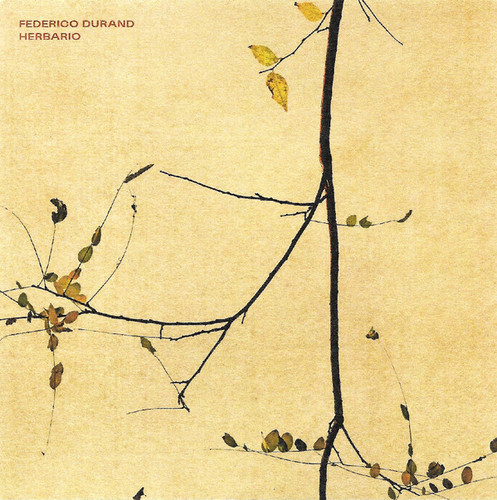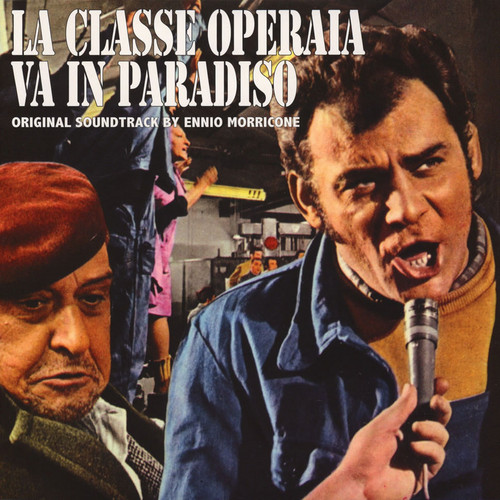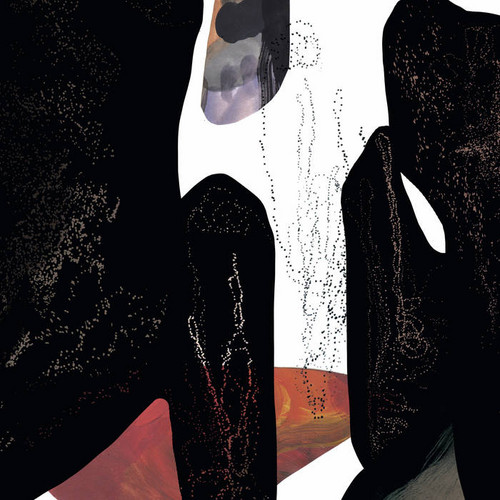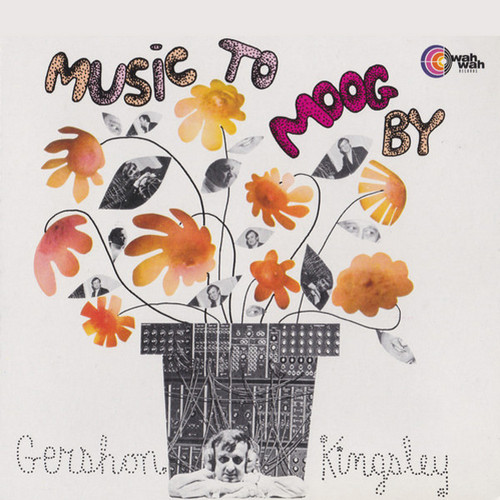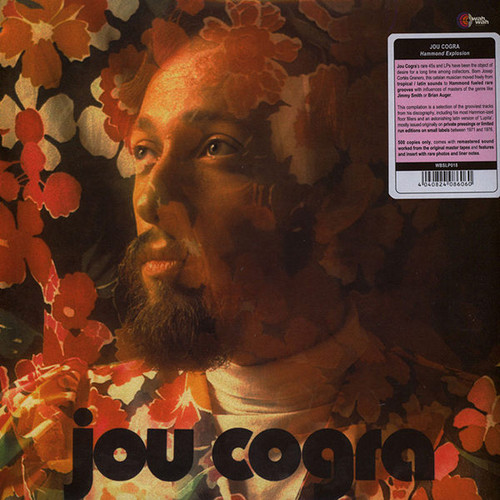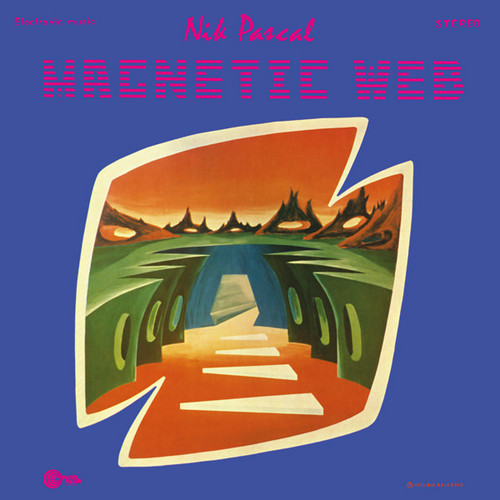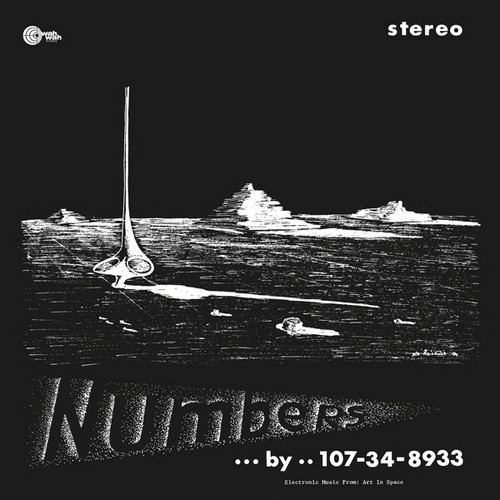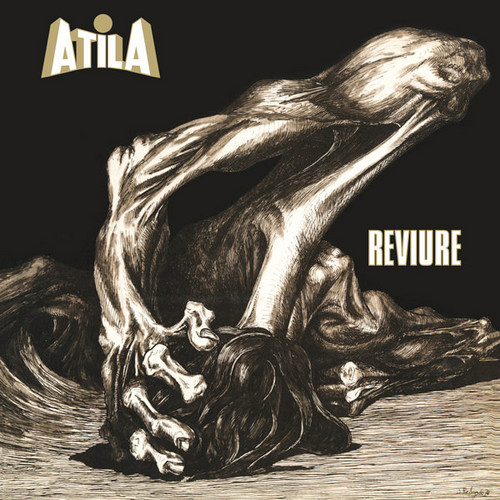Back in stock
People Pleaser Pt.II
Tip!! A singular exercise in Will Guthrie's discography, “People Pleaser”, a series initiated in 2017, sees the Australian partially put down his drumsticks and wear a producer cap for a result offering a resolutely singular perspective of / on his work with a very personal dimension. On the first volume, with a cover signed Stephen O'Malley sets the tone by diverting the chamaré Warhol influenced visual of the album “Unit Structures” by Cecil Taylor. The portrait of the free jazz pianist has be…
Seven Stations
Andrew Batt-Rawden is a Sydney based composer, performer & publisher. His practice is cross-platform & all-embracing. Though initially stemming from an almost traditional sense of ‘the composer’, Andrew fuses elements of gesture, choreography, new technology, text, performance art & mixed-media into his work & has a wide-ranging history of inter-disciplinary collaboration. His current focus is on incorporating all the senses into the audience experience by integrating data feeds to affect live e…
Not Music Yet - for solo piano
Zubin Kanga is a modern day David Tudor. He is at the forefront of 21st century avant-garde piano music, not only as a performer but also as a prolific commissioner of new works. Zubin has collaborated with many of the world’s leading composers including Steve Reich, Beat Furrer, Thomas Ades & Michael Finnissy. His teacher & mentor Rolf Hind was a pianist signed to the infamous Factory Records (Joy Division, Cabaret Voltaire) who instilled a borderless view of ‘classical’ music in him. Zubin has…
The Topography of Ascending Frameworks
"The Topography of Ascending Frameworks marks the final instalment of the Constructions Trilogy; a longform conceptual recording project that explored a large scale idea-based framework to guide improvised composition. The trilogy began in 2011 with The Geography of Collapsing Structures, a study of deconstructive forces as applied to composition. In 2012, Cycle~ 440 recorded The Cartography of Shifting Planes, an exploration of the musical potential of the line and of constant variation through…
Fabric Cordial
Bud Petal is the stage name of musician Eran Asoulin. His music has been described as ‘cerebral art-folk’ & ‘the music Lord Byron would be making had he lived in the 21st century’. Bud is a true outsider, a freak-folk wunderkind who has been compared to Syd Barret & Daniel Johnston. But don’t for a minute think him primitive or naive - Bud is worldly & word-wise beyond his years. He was ‘discovered’ when his self-produced first album was pulled from the trash at a local radio station. A self-tau…
Cycle & Song
Jack Symonds is a composer, conductor, pianist & the Artistic Director of Sydney Chamber Opera. SCO is a resident company at Carriagworks, Australia’s answer to The Park Avenue Amoury. His productions are always daring, both musically & theatrically. They tend to garner 5-star reviews and affronted walkouts in equal measure. He studied composition at the Royal College of Music, London & the Sydney Conservatorium of Music, where he received the university medal. He has written pieces for Jane She…
Descend, Behold
**75 copies, hand numbered** Separated by a ten year period, the five pieces composing this record share the same contemplative, hypnotic and sedative space. We contemplate, we descend, we descend and contemplate, opening a space within ourselves to receive and shape imagined, flexible structures, peacefully cohabiting an apparently contradictory reality one in which fixed musical materials live through the transient nature of a moment. It is precisely in the duality between composition and im…
Herbario
* 300 Limited Edition / Green vinyl * Federico Durand’s music is a weave of sound searching introspection and delight through simple melodies, made in the heart of Argentina. Federico likes music, gardens, John Keats’ poetry, collecting stamps and Earl Grey tea. Since 2010 he has been released on various labels such as 12k, Home Normal, IIKKI, Spekk, White Paddy Mountain and more. "Herbario is the Spanish name given to a collection of dried plants and flowers preserved in an album. The collector…
Mantra's
* Comes with an insert. Edition of 64 * From a one copy master; Allen Ginsberg, Maretta Greer and Peter Orlovsky sing mantras with bells and harmonium. Recorded at home in S.F. by Gary Snyder on Fedruary 22 in 1967, a month after the Human Be-In took place.
La Classe Operaia Va In Paradiso
* Restocked, reduced price * Goodfellas present a reissue of Ennio Morricone's soundtrack for La Classe Operaia Va In Paradiso, originally released in 1971. La Classe Operaia Va in Paradiso was another strike for maestro Ennio Morricone, one of the most in-demand composers and arrangers of the time. Avant-garde and slo-funk - with scary fuzz and wah-wah guitars - collide on the track "Metamorfosi" and before you know it, you are in the same vertigo generated by Gruppo D'improvvisazione Nuova Con…
Womb
After last year’s first record with Serenus Zeitblom Oktett, Berlin’s Hyperdelia comes back with a second release – a lucid underwater music composed and arranged by Swedish composer Kajsa Lindgren. Womb is a musical narration for abstracted ears and bodies – engulfing a listener simultaneously in subaquatic sonic environments, distant dreams, memories and voices from the unknown: where time and space fold into each other.The initial material of field-recordings, interviews and compositions has …
Music To Moog By
Reissue of the first album by German-born composer Gershon Kingsley. Originally released by Audio Fidelity in the late '60s, this record introduced him -- previously known for his Moog concertos at Carnegie Hall -- to the record buying public. Kingsley is one of the original Moog pioneers, well known for his collaborations with French maestro Jean-Jacques Perrey & as composer of the famous '72 hit 'Popcorn.' This album features the original 'Popcorn' as well as other Kingsley originals such as '…
Hammond Explosion!
Jou Cogra’s rare 45 and LPs have been the object of desire for a long time among collectors. Born Josep Cortés Granero, this catalan musician moved freely from tropical / latin sounds to Hammond fueled rare grooves with influences of masters of those genres, from Pérez Prado to Jimmy Smith or Brian Auger. His first LP was a collection of popular latin tunes, rooted in his earlier work with latin orchestras. He then moved to the underground, releasing a mega rare privately pressed 4 songs E…
Diane Denoir
**500 copies in gimmick cover** One of the most legendary LPs from Uruguay remains a hidden treasure in the rest of the world. It is the first LP by singer Diane Denoir. Diane was a regular in the “Conciertos Beat” (“Beat Concerts”) of Montevideo's 1960s scene where she performed with Eduardo Mateo on guitar (leader of El Kinto, one of the most influential bands in "candombe beat", and the ones who coined the term), Roberto Galletti on drums and Antonio Lagarde on double bass.Diane was also Mate…
Part V, Night
The Book of AM* is a collection of inspirational songs, poems and stories composed in different parts of the world through the millennia up to the present day and edited and set to music and graphics by Juan Arkotxa and Leslie MacKenzie. The Book expresses core themes from Eastern and Western philosophical and religious traditions and it follows the cycle of day with five parts - Dawn, Morning, Afternoon, Evening and Night. When the Book was first published in 1977 the incomplete Part V, Night, …
Magnetic Web
Magnetic Web was released in 1973. It appeared under the Nik Pascal monicker and showed a clear evolution in sound, favoured by the addition of an Arp 2600 and some rhythm boxes. It also included percussions and cymbals. The Two Headed Dog site thinks "this is his masterpiece in all of its acid-laced glory."Besides his musical explorations, Nik was also an interesting painter. His paintings are auctioned from time to time, and are consciousness expanding works influenced by abstract cubism and s…
The Sixth Ear
**strictly limited edition of 500 copies** 1972 saw the release of The Sixth Ear (Narco NR666), this time credited to Nik Pascal. A more complex work than Beyond The End..., it adds consistent rhythmic patterns to the mix with the addition of bongoes and also explores some interesting chord progressions. Besides his musical explorations, Nik was also an interesting painter. His paintings are auctioned from time to time, and are consciousness expanding works influenced by abstract cubism and surr…
The Complete Narco Recordings
All the recent Wah Wah LPs by Nicolas “Nik Pascal” Raicevic and originally on his Narco Records and Tapes label - rumored to be one of the first truly independent labels, with Raicevic simply walking into an L.A. pressing plant & placing orders for stock - between 1969 and 1975. The music is nothing short of genius; a fine beaded mist of exceedingly lo-fi - tape drop-outs are prevalent, entire frequency ranges completely excised from certain tracks ... not to mention the piss-poor quality of the…
Numbers
If you check the credits of The Rolling Stones' Goats Head Soup LP from 1973 you'll find a certain "Pascal" listed on the percussion section. That is none other than Los Angeles based artist Nicolas Pascal Raicevik (1933-1994), aka 107-34-8933, aka Head, aka Nik Pascal, aka Nik Raicevic. Besides his hitting the bongoes on the Stones album, Nik was a great artist on his own, both as a painter and as a musician. As a musician, he was a pioneer in the use of synthesizers, preceeding the Berlin scho…
Reviure
Edition of 500. First ever official LP reissue of Spanish prog/symph legends Atila’s mega rare third LP Reviure, originally released in 1978. Atila where one of the best Spanish bands in the genre, their three albums are highly sought after pieces exchanging hands for high prices in the collectors’ market. After our reissues of Beginning Of The End and Intención, Reviure is here to complete your collection. Highly influenced by the sound of bands like King Crimson and Pink Floyd, Atila also ente…
